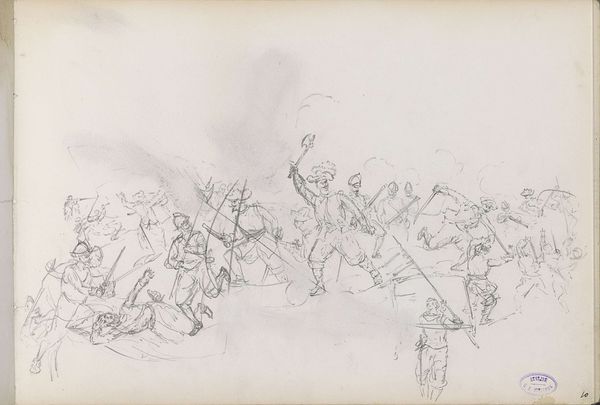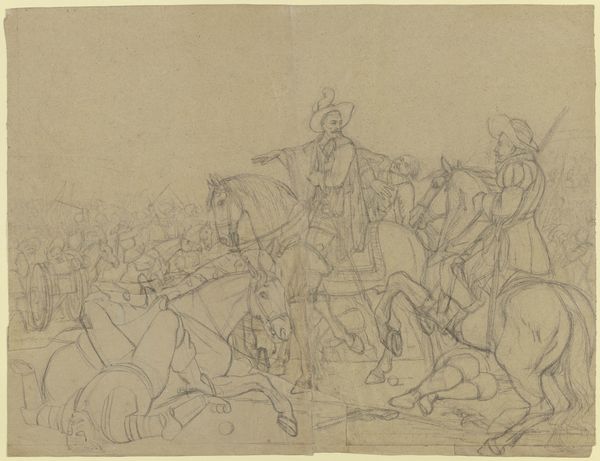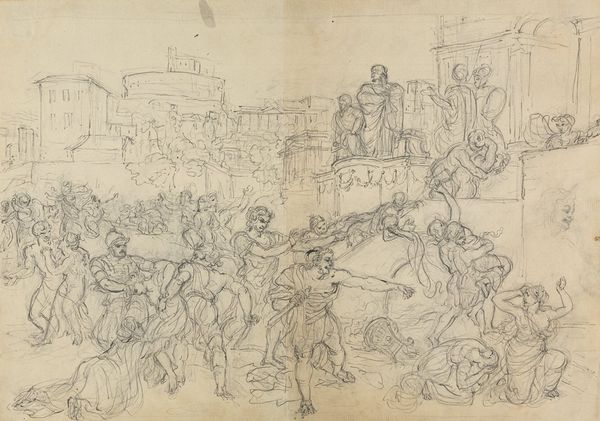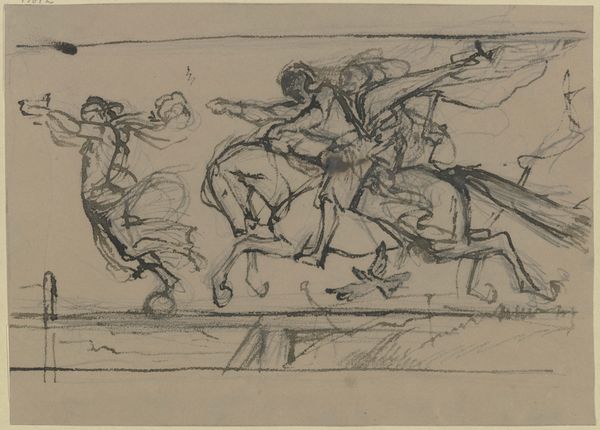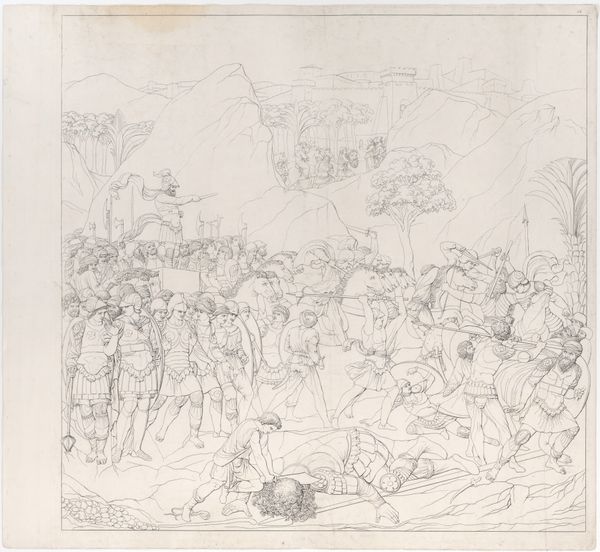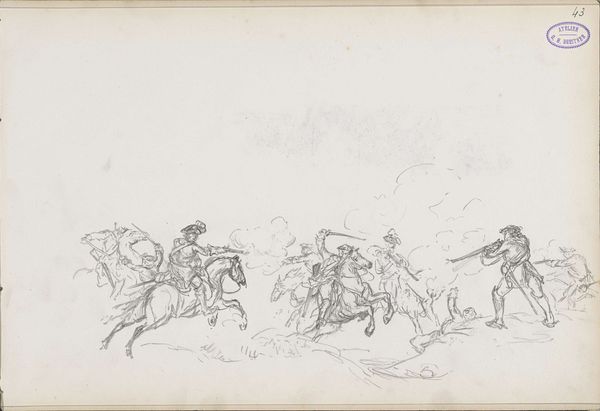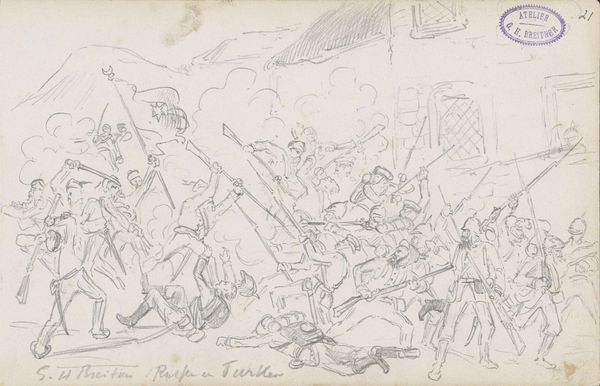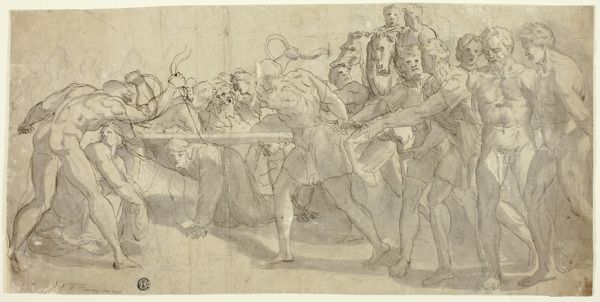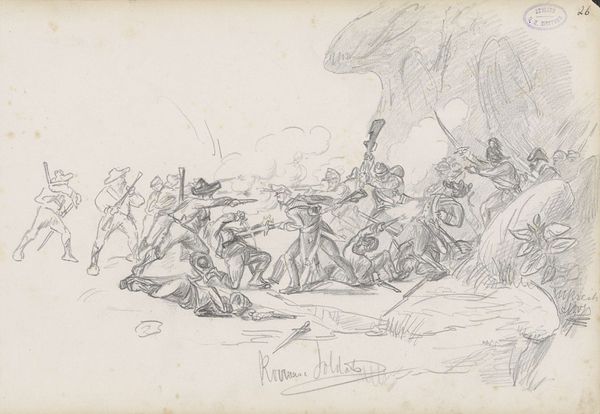
Study for Events of the Life of Massaroni, an Italian Bandit 1823
0:00
0:00
drawing, print, paper, graphite
#
drawing
#
narrative-art
# print
#
figuration
#
paper
#
romanticism
#
graphite
#
history-painting
Dimensions: 201 × 276 mm
Copyright: Public Domain
Editor: This is Bartolomeo Pinelli's "Study for Events of the Life of Massaroni, an Italian Bandit," made in 1823, and held at the Art Institute of Chicago. It's a drawing in graphite, quite linear and dynamic. What strikes me is the sheer activity of the composition. How would you approach interpreting the formal elements at play here? Curator: Observe the dynamism conveyed through line. Note the directional vectors established by the rifles and the implied movement of the figures. Pinelli's strategic use of hatching and cross-hatching— particularly visible in the articulation of musculature and clothing—serves to define form while simultaneously suggesting depth within the pictorial space. How does the lack of shading contribute to your experience of the image? Editor: I see how the minimal shading kind of flattens everything, focusing our attention on the lines themselves, creating a sense of immediacy. Almost like a snapshot in time. Do you think the rapid strokes might reflect the chaos of the event depicted? Curator: Precisely. Now consider the deployment of the figures across the picture plane. Are they evenly distributed, or does Pinelli create focal points through density and arrangement? Notice the grouping on the right compared to the figures near the foreground. How does this arrangement influence your eye's movement through the piece? Editor: The right side, with the dense gathering of soldiers, certainly draws my attention first. Then my eye darts across, following their line of fire towards the struggling figure on the lower left. It feels intentionally imbalanced. What purpose does this compositional strategy achieve? Curator: Pinelli masterfully directs the viewer's gaze, constructing a narrative flow solely through formal means. By varying the density and direction of his linework, and strategically positioning the figures, he implies not just action, but also a sequence of events unfolding before our eyes. It emphasizes, in a visually compelling manner, the inherent instability and imbalance characterizing a society undergoing change. What have you gained from considering the artwork in these terms? Editor: Thinking about line and composition as tools to direct my eye and construct a narrative is very insightful. It’s far more than just a pretty drawing. Curator: Indeed. It’s an insightful exercise in deconstructing the relationship between form and narrative, highlighting Pinelli's keen awareness of art’s capacity for visual storytelling.
Comments
No comments
Be the first to comment and join the conversation on the ultimate creative platform.

